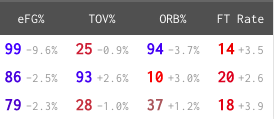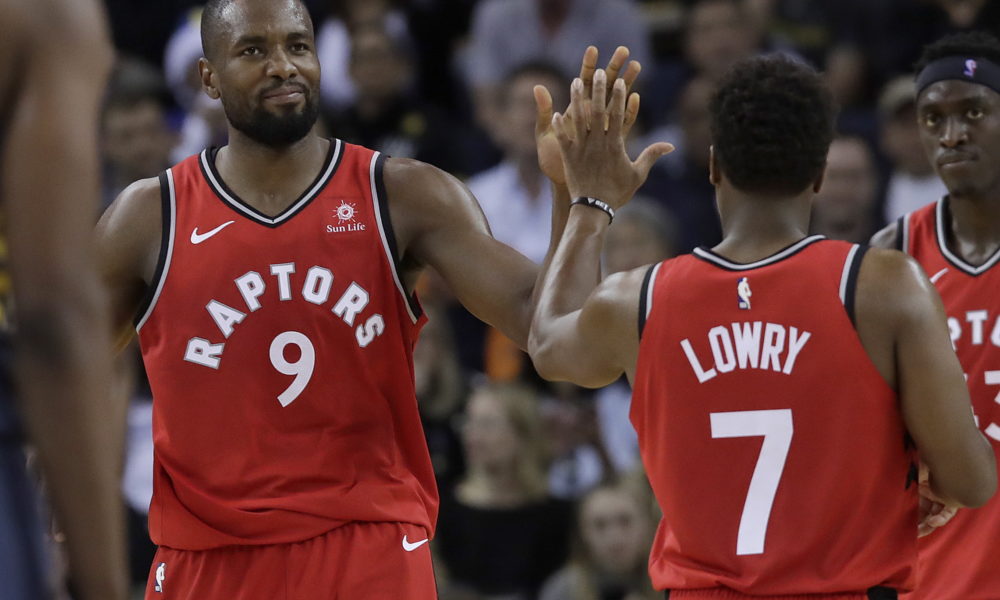There are some facts that few people believe. The existence of climate change, that Elijah Wood and Daniel Radcliffe are actually the same person, and that the moon landing took place are controversial in some unwoke and poorly read circles. There is another fact lurking deep beneath the murky and muddled awareness surrounding the Toronto Raptors.
Fred Van Vleet is one of the best defenders on the Toronto Raptors.
The statement of that fact may spark some adverse reaction in your lizard brain, force you to immediately doubt and condemn the possibility. I’m sure that some readers – likely many of whom are actually taller than Van Vleet – are already midway through an angry and caps lock-filled comment. None of it changes Van Vleet’s abilities.
It’s true that Van Vleet doesn’t have the physical profile of traditionally elite defenders, like Kawhi Leonard. He still offers incredible impact. How can a shrimpy, sub-six-foot point guard, with more thiccness than length, possibly be a good defender, you may ask? Let’s figure it out.
The general numbers favour Van Vleet’s claim to defensive fame. His defensive rating of 102.7 is fourth-best on the team among rotation players, and it’s superior to the numbers of both other point guards, Kyle Lowry and Delon Wright. (That is despite the fact that Wright could probably hold the ball high above Van Vleet’s head to make him jump pointlessly for it, like a child, and that Lowry plays most of his minutes alongside noted defensive stars Leonard and Pascal Siakam.) The same trend occurred last year, when Van Vleet’s 100.4 was second-best among rotation players. It’s perhaps for this reason that Jacob Goldstein’s BBallindex gave Van Vleet an A- in perimeter defence for 2017-18.
Comparing Van Vleet to Wright is illuminating. Wright, in particular, plays on many of the same units and boasts a wingspan longer by perhaps six-to-eight inches; yet, the defence is consistently better when Van Vleet is on the court.
How does he help the defence when he’s on the court? Specific statistics have trouble capturing his impact. His actual numbers, including block and steal rates, defensive rebounding rates, and foul percentage, are all subpar. Yet sometimes (almost always), proper defence on a possession fails to notch a statistic. During all three years of Van Vleet’s career, opponents have consistently missed more shots when Van Vleet is on the court than when he is off.

Numbers and picture taken from Cleaning the Glass.
When Van Vleet plays, opponents don’t always turn the ball over more often, yet the defence is always better. Much of that is because Van Vleet is terrific at contesting shots. He is great at using his low center of gravity at taking away opponents’ space and forcing awkward releases without fouling. (Think more Jason Kidd than Bruce Bowen.)
According to the fallible, but still useful, publicly available second spectrum data, Van Vleet has defended 81 3-pointers this season. Opponents have only made 20, giving a field goal percentage of 24.7, well below the expected percentage of 35.4.
In last night’s blow-out win at Oracle, Van Vleet held Steph Curry to 1-for-6 shooting in the 39 possessions he spent on the multi-MVP. This wasn’t an isolated incident; in just the past few games, in Van Vleet’s 19 possessions against Avery Bradley and 16 against Patrick Peverly, the two guards only attempted 2 shots total. They missed both. Van Vleet held Eric Bledsoe to 0-for-3 in 16 possessions, and D’Angelo Russell and Spencer Dinwiddie to a combined 2-for-7 in 30 possessions. Here’s an excellent rear-view contest against a midrange jumper from Bradley and a great closeout against Bledsoe.
More than holding players to lower percentages, Van Vleet is terrific at keeping opponents from even shooting. He can force offences to go away from an initial look with heads-up denial defence. He keeps the ball away from guards who are desperately trying to touch the rock. Van Vleet is fantastic at playing aggressively in the passing lanes, with textbook form.
When opponents see him playing so high, they’re supposed to cut backdoor to open space for the offence; however, Van Vleet is rarely taken unawares. He responds quickly, moves his feet, and his form allows him to collect steals now and then when offences think they have caught him with his pants down.
He digs aggressive into post-ups and drives, which clumps up offences and forces plenty of turnovers.
He doesn’t fall for fakes.
As a result of his incredible IQ, the Raptors are happy switching Van Vleet onto any player. They allowed Giannis Antetokounmpo to post up the man when playing Milwaukee. Van Vleet comfortably and correctly funneled him to the middle of the floor, until OG Anunoby could double when Antetokounmpo turned his back to try to spin baseline.
Van Vleet is even smart enough to use his switching as a weapon. Remember when Draymond Green got a boatload of media love for pre-switching a screen? SBNation called him “a defensive genius unlike any the NBA has ever seen” for organizing such a manoeuver. Well guess what? Van Vleet did the same thing.
With seconds ticking down in the first half against the Bucks, Khris Middleton called for a screen from his center. Stationed in the corner, Van Vleet waved away Jonas Valanciunas and picked up the Bucks’ center so that he could switch onto Middleton instead of the lumbering Valanciunas. It worked brilliantly, and Van Vleet came up with a steal as a result of his defensive genius unlike any the NBA has ever seen.
Here he throws a bunch of those skills into one perfect possession against one of the toughest covers in the NBA. Van Vleet picks up Curry full-court and forces a few dribble moves to kill 5-6 seconds from the clock. He sticks with Curry as he sets a screen, not biting a bit on the fake action with Klay Thompson. He sneaks through an off-ball screen unfazed and when Curry receives the pass, runs slightly past Curry onto his left hip, taking away any chance at a jumpshot. He keeps his left hand in Curry’s dribbling space just in case, while Van Vleet re-positions his hips to funnel Curry towards help. Serge Ibaka’s help ends up not being necessary, as Van Vleet somewhat luckily raked the ball away with his left hand when Curry put the rock on the floor.
You don’t need to have the body of Kawhi Leonard to be an elite defender in the NBA. It helps. Obviously. But the Raptors know all too well that athletic 6-foot-7 wings who can play above the rim aren’t necessarily competent defenders. Van Vleet makes up for his physical deficiencies by playing smart. He anticipates plays, often multiple offensive actions in advance, and is in the correct place at the correct time to force the defence into plan B. He uses his body to force misses, and like Lowry, he takes post-ups personally. He always boxes out and finishes defensive stops correctly.
It’s true that bigger shooting guards like Klay Thompson can shoot over Van Vleet. It’s true that he is not a deterrent at the rim. Regardless, the Raptors want him guarding always-in-motion offensive shooters, or rotating over to tag rollers and block out in the paint. If you don’t think he’s a good defender, then you don’t know what to look for. You don’t need size to make correct decisions on the defensive end. Don’t deny obvious, science-supported facts; accept that Fred Van Vleet is a defensive stud.



